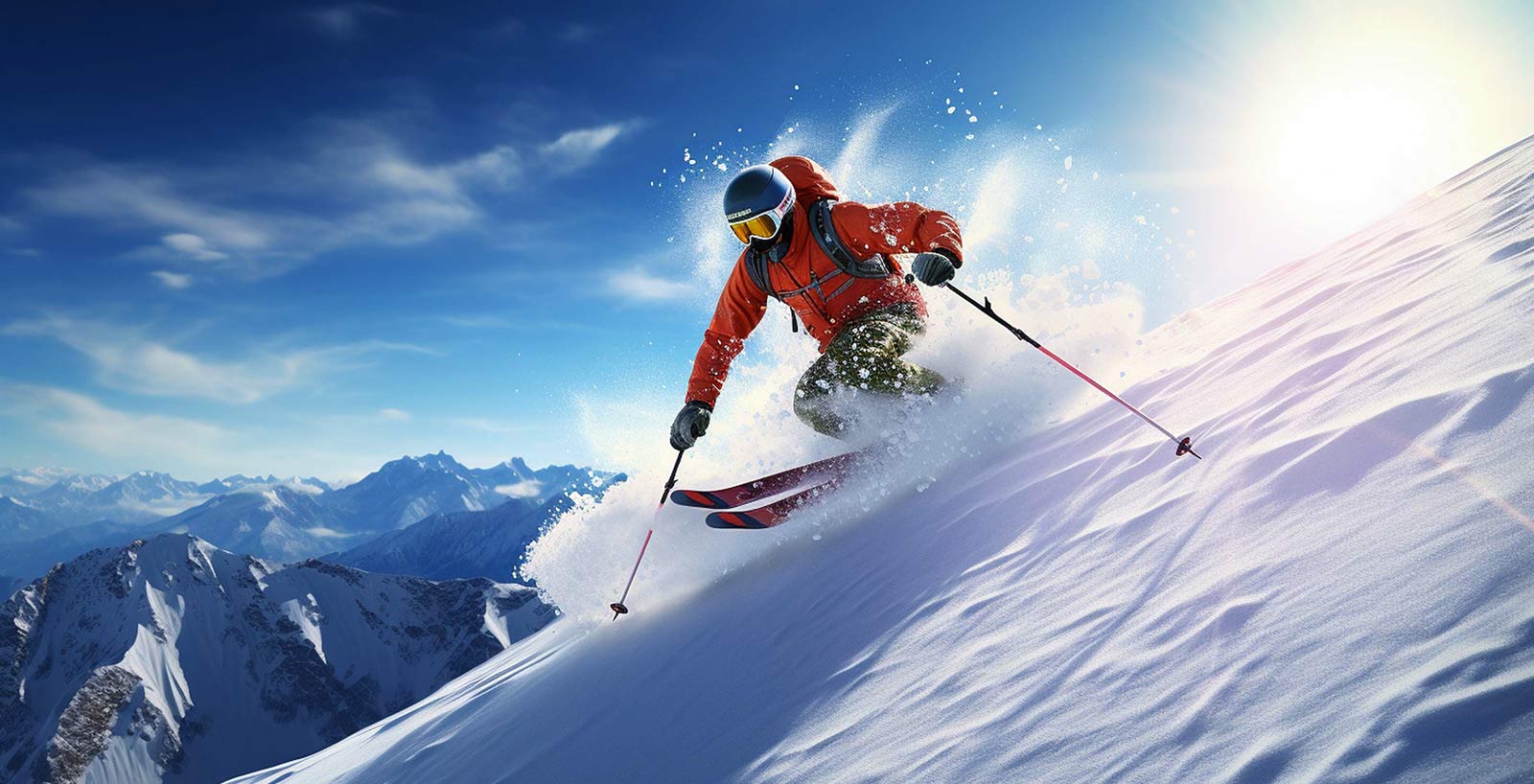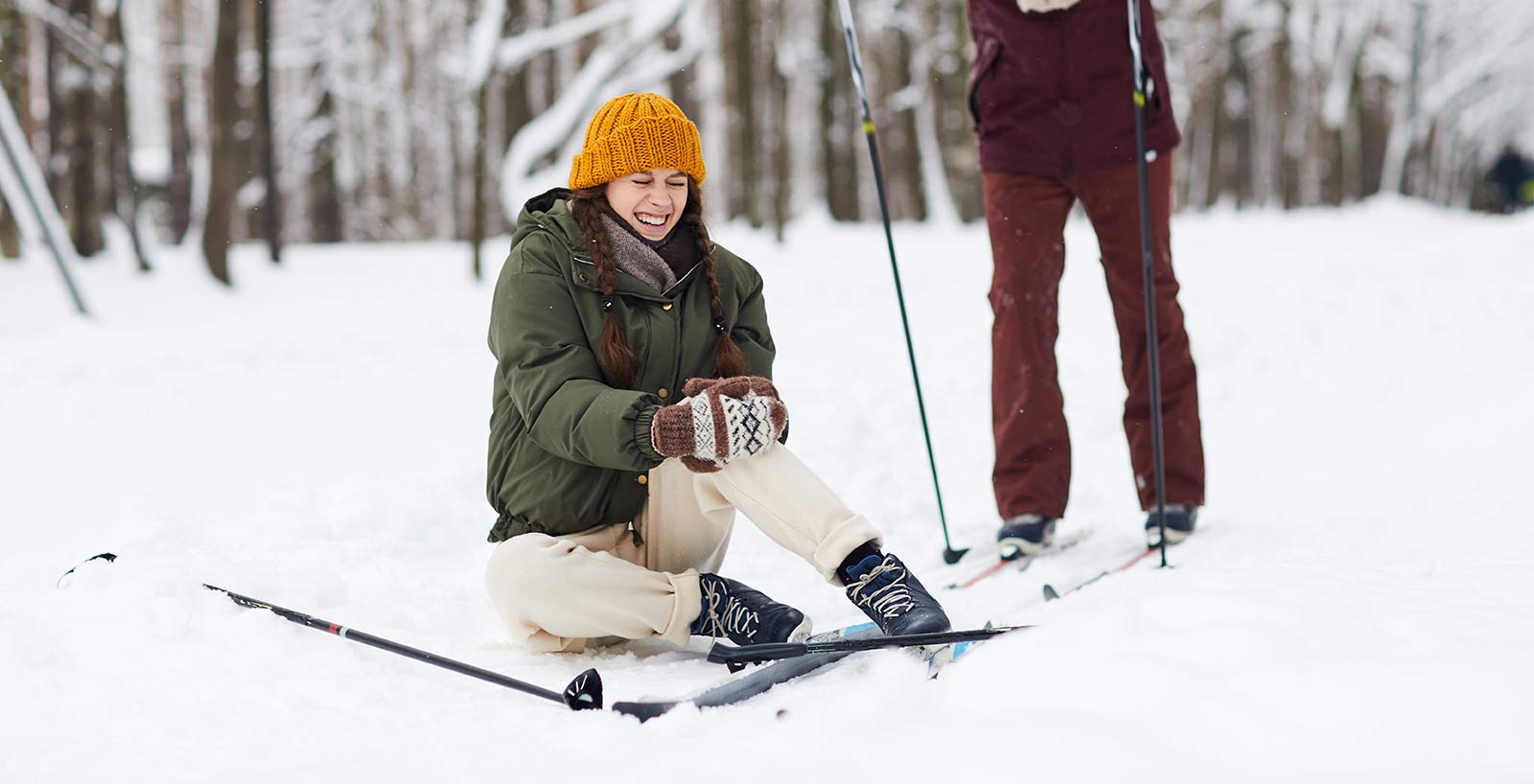For many, winter signifies cozy nights by the fireplace, mugs of hot cocoa, and the exhilarating thrill of hitting the ski slopes. But amidst the breathtaking scenery and adrenaline rush, lurks the unfortunate reality of potential injuries.

Skiing, while undoubtedly a joyful activity, comes with inherent risks. To ensure your ski season is filled with powder turns and unforgettable memories, let’s delve into some of the most common skiing injuries and how to prevent them:
Knee Knocks:
The undisputed champions of the injury parade are knee ailments. The twisting and turning nature of skiing puts immense stress on your knees, making them susceptible to sprains, strains, and even tears of critical ligaments like the Anterior Cruciate Ligament (ACL) and Medial Collateral Ligament (MCL).
Prevention:
- Warm-up: Loosen up your legs with dynamic stretches and light cardio before carving your first line
- Spend Time Strengthening Before You Go: Building strong quads, hamstrings, and glutes significantly reduces knee injury risk. Squats, lunges, and leg presses are your allies
- Proper Technique: Mastering good skiing form ensures balanced weight distribution and reduces strain on specific joints. Take lessons if needed
- Listen to your body: Don’t push yourself beyond your limits, especially when fatigued

Shoulder Sniffles:
Second in line are shoulder injuries. Falls onto outstretched arms or sudden twists can result in sprains, dislocations, or even fractures of the humorous or collarbone.
Prevention:
- Pole Placement: Keep your poles forward and close to your body, not planted wide. This absorbs impact during falls
- Strengthening: Exercises like rows, push-ups, and shoulder raises build resilience. Build strong rotator cuff muscles to give you stability in the elements
- Falling Technique: Learn to fall safely by rolling onto your side, not your arms
Wrist Woes:
Often underestimated, wrist injuries like sprains and fractures can significantly impact your ski trip, especially if you’re more akin to snowboarding. They typically occur when trying to brace yourself during a fall.
Prevention:
- Wrist Guards: These are non-negotiable for boarders! They absorb impact and provide vital support
- Proper Grip: Maintain a relaxed but firm grip on your poles, avoiding white-knuckling them
- Falling Technique: Remember the roll-to-the-side technique!
Head Honcho:
While helmets are now mandatory on most slopes, head injuries like concussions are still a concern. Collisions with other skiers, falls, and even hitting icy patches can be dangerous.
Prevention:
- Helmet: Choose a certified helmet that fits snugly and comfortably
- Be Aware: Scan the slopes for potential hazards and maintain a safe distance from other skiers
- Control Your Speed: Adjust your speed according to your skill level and terrain conditions
Bonus Tip: Stay hydrated! Dehydration can impair your judgment and increase your risk of falls.
Remember, prevention is always better than cure. By incorporating these tips into your pre-ski routine and mindful practice on the slopes, you can significantly reduce your risk of injuries and maximize your enjoyment on the powder. So, get out there, embrace the crisp mountain air, and carve those turns with confidence, knowing you’ve taken steps to keep your body happy and healthy. Happy skiing!

